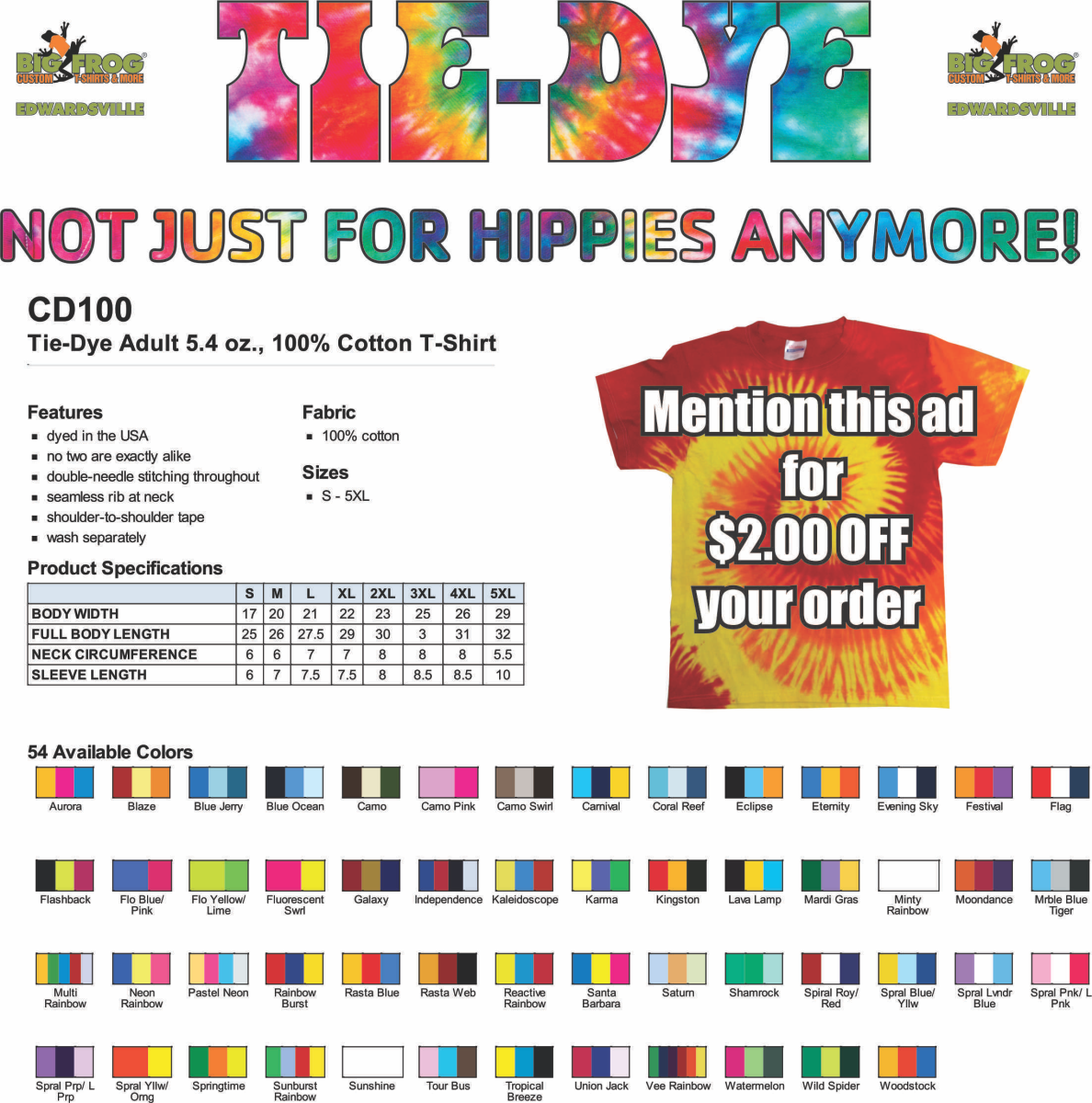6667 Edwardsville Crossing Drive, Edwardsville, IL 62025
Change Location6667 Edwardsville Crossing Drive, Edwardsville, IL 62025
Change LocationThe Graphic T: A Brief History
Fashion without the T-shirt is like coffee without a cup: directionless, too hot. And so it is almost inconceivable to think that through the first half of the 20th century it was considered only an undergarment: a hidden nod to Victorian modesty in a newly mass-produced age. From the 1950s onwards, however, the graphic T rapidly emerged as a building block for individualism, free speech, and style. Here’s how the T with graphics went from Army gear to everyone’s indispensable wardrobe staple.
In the interim between WWI and WW II, T-shirts began to appear in earnest in U.S. Army uniforms thanks to jersey fabric that was tough, cool and ideal for training on hot days. By the 1950s hot rod rabble-rousers with slicked back hair had appropriated the T defiantly and to good effect — usually accompanied by blue jeans, black shades and a pack of smokes rolled neatly into a sleeve — thanks in no small part to original cool kids, James Dean and Marlon Brando.
By the 60s, screenprint graphics had become commonplace and boys T-shirts regularly sported stylized images of sports, race cars, spaceships and action heroes. Around the end of the decade, though, they had entered into much more fashionable territory. Stylish coeds begun wearing them casually in a vogue best distilled by Jean Seaberg’s New York Herald Tribune T in Jean-Luc Godard’s landmark À bout de souffle.
On through the 70’s the T-shirt as we now know it emerged: blank canvases upon which to make grand statements. This was the first golden age of the graphic T, from T Mick Jagger’s meta “Who The **** Is Mick Jagger” moments to the newly ubiquitous band logos of the Rolling Stones, Kiss, AC/DC and others. Nobody did snarky T’s like Frank Zappa and every influential band from The Ramones to Blondie and the Grateful Dead had their own. Out on tour T’s, modernist graphics and pithy slogans were practically the uniform.
By this time, too, the graphic T had become serious competition for the ubiquitous button as the most important piece of political swag. Every presidential race from Johnson-Goldwater, Nixon-McGovern, Carter-Ford and then especially Reagan’s two campaigns saw a onslaughts of graphic T’s, mostly in red and blue that became badges of honor.
By the 80’s, it was all material world and conspicuous consumption. Giant graphic logos suddenly appeared from all corners and brand like Guess?, Nike, Fila, Adidas, Calvin Klein and dozens of others cashed in on blown up identity. There was a real divergence by this time in what the T-shirt meant. It was a fully mainstream unisex garment, but its undifferentiated substance meant that for the first time a nearly identical, substantially undifferentiated garment could sell for next to nothing or a small fortune — an $80 designer T-shirt was essentially the same as a $5 bake sale special save for the content of its graphics. The T-shirt had become the ultimate carrier for all the most important postmodern signifiers: protest, politics, place (geographic and economic), preference.
The trends of the 80s continued into the cynical 90s, but took on a harder edge. Logos stayed huge but were toned down, graphics were slicker, political statements were graver and price gaps were larger. Bands like Nirvana blew up other bands by way of T-shirts (Daniel Johnston became a cult figure likely in no small part thanks to Kurt Cobain’s famous T-shirt love). Nirvana’s own band T-shirts, of course, become among the most iconic ever after Cobain’s death.
After grunge died down by the late 90s, the T-shirt experienced a decade-long lull. Inexpensive printing made for heavily commercialized statement t-shirts, designer logos had become cheapened by ubiquity and counterfeit knockoffs and everything was peddled by the zillions at Wal-Mart and Carrefour and Hot Topic. By the turn of the millennium, the graphic T-shirt had taken on a losery, almost Comic Book Guy pall. It had become a lazy shortcut for personal style and no matter its graphic content — Budweiser, Beavis and Butthead or George Bush — nothing really meant much.
Then, in 2004 that wonderfully earnest cult film, Napoleon Dynamite, entered the scene and with one majorly powerful meme brought the modern graphic T back-to-its snarky, clever 1970s roots. Perhaps not thanks directly to Vote For Pedro, the middle aughts were definitely a hard restart for the T-shirt. Good designers began to mine up the best of 90s cynicism and combine it with world-class graphic design and fantastic materials. Brands like Supreme pioneered limited runs and capsule collections that kept any one design from becoming too stale. Big brands sometimes put their best foot forward with graphic T’s, and fashion stalwarts from Céline to Chanel, Kenzo, Comme des Garçons and Acne continue to churn out iconic T’s every fashion season. Riff labels like the now defunct Comme des ****DOWN, which famously turned Balmain’s logotype into “Ballin,” have made millions by remixing luxury T’s that have become all too familiar. This cerebral, brash appropriation has ensured that the T-shirt remains a pre-eminent wardrobe fixture well into the Internet Age.
This decade, brands like Perks and Mini (P.A.M.) and Hood By Air have pushed the graphic envelope even farther, injecting a dose of raw dystopian newness — they are the T-shirt as civil disobedience, clothes for a post-Snowden world. Meanwhile, more mainline labels from Raf Simons to Patrik Ervell, Kitsuné, Our Legacy and Norse Projects are elevating the T to places it hasn’t been before. For the first time in decades, cuts and silhouettes are morphing to new places, and better fabrics, cleverly inventive graphics and careful craftsmanship are transforming them into real aspirational items — they’re a world away from the logo-is-everything indifference of 80s designer T’s. With tiny LEDs and nanofibers and 3D printing and yet another presidential election on the horizon, we’d bet that the T-shirt will remain the best canvas for outward individuality for long time to come.

Information about protection from the sun, as promised:
https://www.skincancer.org/prevention/sun-protection/clothing/protection

Out of all the places I called, Big Frog had the best and most affordable price! They worked quickly to complete my order and the t-shirts look awesome. Great customer service. Would highly recommend and will be ordering from again!By Madison
The customer service was top-notch! From bringing my idea to life and finishing the project early! Did I mention the price was way less than I imagined?By Annie E.
I like everything about the services that Big Frog of Edwardsville gave me! First time there and I highly recommend them for any custom shirt orders anyone may need. They will work with you to find the right font and what looks the best!By Joe B.
The shirts turned out great and as a public school Art Club sponsor --your support of our group really helped us out! It is so nice to see support for the arts from a local business. Thank you again!By A.T.